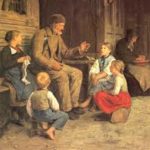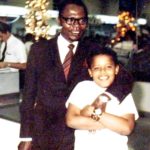
Storytelling remains perhaps the best way to convey information across. It is a method that president Obama has mastered and used successfully in speech and in writing. He sees life as a story and tells it like a master story teller. Bruner (1991) opines that humans draw on a lifetime of relevant experiences to explain stories, to tell stories, and to help choose the most appropriate actions, in real-life settings. Thus, story-telling is a key feature of narrative intelligence.

President Obama has written 3 books so far, namely, Dreams from My Father: A Story of Race and Inheritance (Obama, 1995); The Audacity of Hope: Thoughts on Reclaiming the American Dream (Obama, 2006); and, Of Thee I Sing: A Letter to My Daughters (Obama, 2010). The primary focus of these books is his life story, views about life, his values, and aspirations. The books give a unique insight into Obama’s thoughts on family, America, and the world.

Through his book, Obama tells his story. Obama has also used his books as a way of communicating with Americans, highlighting his political views and goals in the books as well as the history of his family.

In “Dreams from My Father: A Story of Race and Inheritance”, Obama opens his story in New York, where he hears that his father, a figure he knows more as a myth than as a man, has died in a car accident (Obama, 1995). The news triggers a chain of memories, as Barack retraces his family’s unusual history: the migration of his mother’s family from small-town Kansas to the exotic, dreamlike islands of Hawaii (Obama, 1995); the love that develops between his mother and a promising young Kenyan student, a love nurtured by youthful innocence and the integrationist spirit of the early sixties (Obama, 1995); his father’s departure from Hawaii when Barack is only two, as the realities of race and power reassert themselves; and Barack’s own painful awakening to the fears and doubts that exist not just between the larger black and white worlds but within himself (Obama, 1995).
In the “Audacity of Hope: Thoughts on Reclaiming the American Dream”, Obama spells out a vision of public life that is about finding the common threads that bind all people (Obama, 2006). He describes his hopes for a different America, and how the ideals of its democracy can be renewed. Obama writes about his experiences as a politician, about balancing his family life and his public vocation. He also focuses on his quest for consensus, and his respect for the democratic process (Obama, 2006). Indeed, Obama’s Audacity of Hope has been translated into Albanian, Arabic, Portuguese, Bengali, Spanish, Bulgarian, Chinese, Danish, French, Dutch, Japanese, Persian, Hindi, Tamil, among many other languages.
“The history of storytelling isn’t one of simply entertaining the masses but of also advising, instructing, challenging the status quo” Therese Fowler
In his third book, the insightful “Of Thee I Sing: A Letter to My Daughters,” President Obama writes a tribute to thirteen famous Americans, that includes George Washington, and the ideals that have shaped the United States (Obama, 2010).

President Obama has effectively used storytelling to reach both the American and global audience effectively. He delivers his speech with mastery sometimes with songs and gestures that keep you captivated. He tells stories through his books too. Storytelling has magic. Whenever you lose an audience, tell them ‘i have a story’, and watch eyes light up and drooping heads raised.